
The Battle of Lundy's Lane, also known as the Battle of Niagara, was a battle fought on 25 July 1814, during the War of 1812, between an invading American army and a British and Canadian army near present-day Niagara Falls, Ontario. It was one of the bloodiest battles of the war, and one of the deadliest battles fought in Canada, with approximately 1,720 casualties including 258 killed.
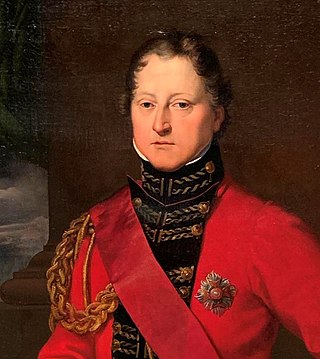
General Sir Gordon Drummond, GCB was a Canadian-born British Army officer and the first official to command the military and the civil government of Canada. As Lieutenant Governor of Upper Canada, Drummond distinguished himself on the Niagara front in the War of 1812 and later became Governor-General and Administrator of Canada.

Old Fort Erie, also known as Fort Erie, or the Fort Erie National Historic Site of Canada, was the first British fort to be constructed as part of a network developed after the Seven Years' War was concluded by the Treaty of Paris (1763), at which time France ceded its territories east of the Mississippi River to Great Britain. The installation is located on the southern edge of what is now the Town of Fort Erie, Ontario, directly across the Niagara River from Buffalo, New York, United States.
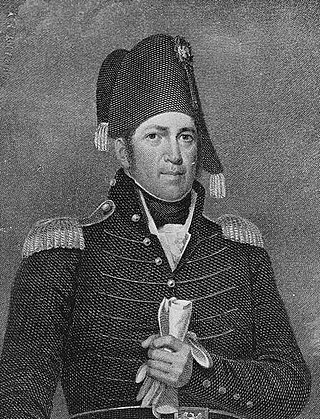
Jacob Jennings Brown was known for his victories as an American army officer in the War of 1812, where he reached the rank of general. His successes on the northern border during that war made him a national hero, and he was awarded a Congressional Gold Medal.

The Battle of Chippawa, also known as the Battle of Chippewa, was a victory for the United States Army in the War of 1812, during its invasion on July 5, 1814, of the British Empire's colony of Upper Canada along the Niagara River. This battle and the subsequent Battle of Lundy's Lane demonstrated that trained American troops could hold their own against British regulars. The battlefield is preserved as a National Historic Site of Canada.
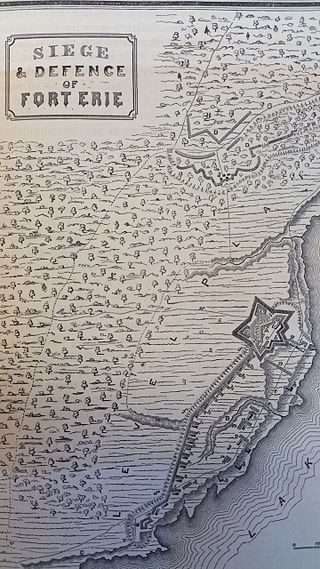
The Capture of Fort Erie by American forces in 1814 was a battle in the War of 1812 between the United Kingdom and the United States. The British garrison was outnumbered but surrendered prematurely, in the view of British commanders.

The siege of Fort Erie, also known as the Battle of Erie, from 4 August to 21 September 1814, was one of the last engagements of the War of 1812, between British and American forces. It took place during the Niagara campaign, and the Americans successfully defended Fort Erie against a British army. During the siege, the British suffered high casualties in a failed storming attempt; they also suffered casualties from sickness and exposure in their rough encampments. Unaware that the British were about to abandon the siege, the American garrison launched a sortie to destroy the British siege batteries, during which both sides again suffered high losses.

The Battle of Fort George was a battle fought during the War of 1812, in which the Americans defeated a British force and captured Fort George in Upper Canada. The troops of the United States Army and vessels of the United States Navy cooperated in a very successful amphibious assault, although most of the opposing British force escaped encirclement.
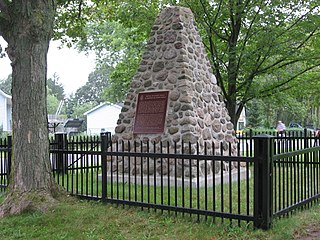
The Battle of Cook's Mills was the last engagement between U.S. and British armies in the Niagara, and the penultimate engagement on Canadian soil during the War of 1812. After about a half-hour, American forces out-maneuvered the British column and destroyed all grain and flour.

General Sir Phineas Riall, KCH was the British general who succeeded John Vincent as commanding officer of the Niagara Peninsula in Upper Canada during the War of 1812. In 1816, he was appointed Governor of Grenada.

The following is a synopsis of the land campaigns of the War of 1812.

Lieutenant-General Sir Thomas Pearson KCB KCH was a British Army officer, who took part in the French Revolutionary Wars and Napoleonic Wars, and in the War of 1812 against the United States of America.
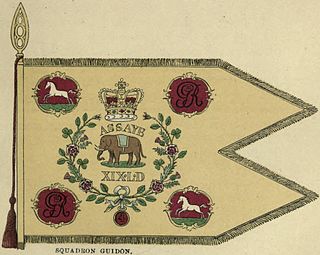
The 19th Light Dragoons was a cavalry regiment of the British Army created in 1781 for service in British India. The regiment served in India until 1806, and in North America during the War of 1812, and was disbanded in Britain in 1821.
Events from the year 1814 in the United States.
John B. Campbell was an American soldier during the War of 1812, famous for his expedition to destroy the Miami Indian villages along the Mississinewa River and perhaps most infamous for ordering the destruction of private houses and other property in Dover, Canada, including the stocks of grain and mills, which led to a Court of Enquiry and an unprecedented letter to the enemy explaining himself. He was mortally wounded at the Battle of Chippawa in July.
The Canadian Volunteers was a unit composed of pro-United States citizens or inhabitants of Upper Canada which fought for the United States of America during the Anglo-American War of 1812.
The 103rd Regiment of Foot was a line infantry unit of the British Army. Though only existing for just over 10 years, the regiment would see more action than most of its 100-series regiments.
The Battle of Conjocta Creek was an attempt by British forces under the command of Lieutenant Colonel John Tucker to raid the American supply depots at the towns of Black Rock and Buffalo. The Raid was ordered by British Lieutenant General Gordon Drummond in hopes of causing an early American surrender at Fort Erie. On the morning of August 3, 1814, Tucker and his men met a small force of American riflemen under the command of Major Lodwick Morgan. After fighting for about an hour, Tucker and his men were defeated, and withdrew across the Niagara river to Canada. The battle played a major role in the Siege of Fort Erie's failure, due to the supply post at Black Rock being able to continue supplying the American force defending Fort Erie. This resulted in the British eventually withdrawing from their siege positions around the fort to Chippawa on September 21st, 1814.













